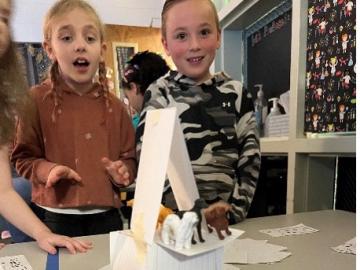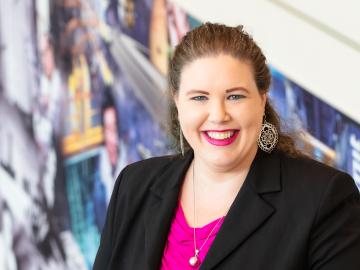
Filter News
Area of Research
- (-) Materials (76)
- (-) Neutron Science (32)
- Advanced Manufacturing (1)
- Biological Systems (1)
- Biology and Environment (56)
- Building Technologies (1)
- Clean Energy (63)
- Computational Engineering (1)
- Computer Science (2)
- Electricity and Smart Grid (1)
- Energy Sciences (1)
- Fuel Cycle Science and Technology (1)
- Fusion and Fission (19)
- Fusion Energy (3)
- Isotope Development and Production (1)
- Isotopes (15)
- Materials Characterization (2)
- Materials Under Extremes (1)
- National Security (26)
- Nuclear Science and Technology (2)
- Supercomputing (73)
News Topics
- 3-D Printing/Advanced Manufacturing (5)
- Advanced Reactors (1)
- Artificial Intelligence (1)
- Big Data (1)
- Bioenergy (2)
- Biology (1)
- Biomedical (2)
- Biotechnology (1)
- Buildings (3)
- Chemical Sciences (17)
- Clean Water (1)
- Climate Change (3)
- Composites (2)
- Computer Science (1)
- Coronavirus (2)
- Critical Materials (4)
- Decarbonization (5)
- Energy Storage (6)
- Environment (4)
- Fossil Energy (1)
- Fusion (2)
- Grid (2)
- High-Performance Computing (1)
- Irradiation (1)
- Isotopes (3)
- Machine Learning (1)
- Materials (43)
- Materials Science (8)
- Microscopy (3)
- Molten Salt (1)
- Nanotechnology (5)
- Net Zero (1)
- Neutron Science (27)
- Nuclear Energy (5)
- Partnerships (6)
- Physics (9)
- Polymers (4)
- Quantum Computing (2)
- Quantum Science (1)
- Renewable Energy (1)
- Space Exploration (1)
- Sustainable Energy (2)
- Transportation (3)
Media Contacts

A series of new classes at Pellissippi State Community College will offer students a new career path — and a national laboratory a pipeline of workers who have the skills needed for its own rapidly growing programs.

A chemist from Oak Ridge National Laboratory attracted national attention when her advocacy for science education made People magazine’s annual “Women Changing the World” issue.

Nine engineers from ORNL visited 10 elementary and middle school classrooms in three school districts during National Engineers Week, Feb. 21 to 24, 2023, describing and demonstrating the excitement of the engineering profession to more than 300 Tennessee students.

The old photos show her casually writing data in a logbook with stacks of lead bricks nearby, or sealing a vacuum chamber with a wrench. ORNL researcher Frances Pleasonton was instrumental in some of the earliest explorations of the properties of the neutron as the X-10 Site was finding its postwar footing as a research lab.

Scientists at ORNL developed a competitive, eco-friendly alternative made without harmful blowing agents.

Scientists have long sought to better understand the “local structure” of materials, meaning the arrangement and activities of the neighboring particles around each atom. In crystals, which are used in electronics and many other applications, most of the atoms form highly ordered lattice patterns that repeat. But not all atoms conform to the pattern.

Benjamin Manard has been named to the editorial board of Applied Spectroscopy Practica, serving as an associate editor.

Anne Campbell has been selected as a topical editor for a special issue of the journal Frontiers in Nuclear Engineering, titled “Women in Nuclear Engineering Research.”

ORNL has entered a strategic research partnership with the United Kingdom Atomic Energy Authority, or UKAEA, to investigate how different types of materials behave under the influence of high-energy neutron sources. The $4 million project is part of UKAEA's roadmap program, which aims to produce electricity from fusion.

Alice Perrin is passionate about scientific research, but also beans — as in legumes.


